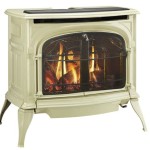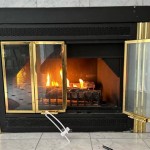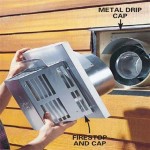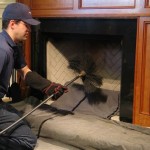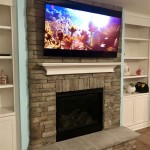Wood Burning Fireplaces With Blowers: Enhancing Heat Distribution and Efficiency
Wood burning fireplaces have long been a cherished source of warmth and ambiance in homes. However, traditional fireplaces often struggle with inefficient heat distribution, with much of the heat escaping up the chimney. This can lead to uneven temperatures within a room and limit the overall heating capacity of the fireplace. To address these challenges, many modern fireplaces incorporate blowers, which significantly enhance heat distribution and efficiency. In this article, we will explore the benefits of wood burning fireplaces with blowers, delve into how they work, and discuss factors to consider when choosing a fireplace with blower capabilities.
The Advantages of Blowers in Wood Burning Fireplaces
Fireplaces equipped with blowers offer a range of advantages over traditional fireplaces, primarily by improving heat distribution and efficiency. Here are some key benefits:
Enhanced Heat Distribution
Blowers work by drawing in cool air from the room and forcing it over the hot surfaces of the firebox, such as the firebricks and the back of the fireplace. This heated air is then blown out into the room through vents or grilles, distributing warmth more evenly throughout the space. With a blower, you can expect a more uniform temperature throughout the room, creating a more comfortable and enjoyable experience.
Increased Efficiency
By circulating warm air, blowers help to maximize the heat output of your fireplace. They effectively capture more of the heat generated by the fire, reducing the amount that escapes up the chimney. This results in a more efficient use of your firewood, meaning you can potentially save money on your heating costs in the long run.
Faster Warm-Up Time
Blowers can significantly reduce the time it takes for your fireplace to heat a room. The forced air circulation helps to distribute heat more quickly and efficiently, making your fireplace a more effective heating source.
How Blowers Work in Fireplaces
Fireplace blowers are typically powered by an electric motor that operates on a standard 120-volt outlet. The motor drives a fan, which draws in cool air from the room and pushes it over the heated surfaces of the fireplace. The heated air is then blown out through vents or grilles, distributing warmth throughout the room. Some blowers are adjustable, allowing you to control the speed and direction of the airflow.
The location of the blower can vary depending on the specific design of the fireplace. Some blowers are mounted directly into the firebox, while others are installed in the lower portion of the fireplace, near the hearth. The chosen location will depend on the design and size of the fireplace, as well as the desired heat distribution pattern.
Choosing a Wood Burning Fireplace with a Blower
When selecting a wood burning fireplace with a blower, consider the following factors:
Blower Capacity
The capacity of the blower will determine how much heat it can move and how effectively it can distribute warmth throughout the room. Consider the size of the room you plan to heat and choose a blower with sufficient capacity to meet your needs.
Blower Controls
Some blowers offer adjustable speed settings, allowing you to control the airflow and heat output to your preference. Other models may include remote controls, making it easier to adjust the blower settings from anywhere in the room.
Energy Efficiency
Choose a fireplace with a blower that has been certified by an independent organization, such as the National Fireplace Institute (NFI), to meet energy efficiency standards. This can help to ensure that the fireplace is operating efficiently and effectively.
Installation and Maintenance
The installation of a fireplace with a blower will vary depending on the specific model and design. Consult with a qualified professional to ensure that the installation meets local building codes and regulations. Regular maintenance, such as cleaning the blower fan and vent, is essential for optimal performance and to prevent any safety hazards.
By incorporating blowers into your wood burning fireplace, you can dramatically enhance its heat distribution and efficiency, transforming it into a more effective and enjoyable source of warmth and ambiance for your home. When choosing a fireplace with a blower, carefully consider the blower capacity, controls, energy efficiency, and installation and maintenance factors to ensure you select the best option for your specific needs.

Fireplace Efficiency Blowers And Why You Should Have One

Inserts Wood Osburn 2200 Insert With Blower Ob02201

Ventis Hei240 Wood Burning Insert Rockford Chimney

T25i Timberwolf Wood Fireplace Insert Hearth Stove Patio

Superior Catalytic Combustion Wood Burning Fireplace Double Black Steel Doors Wct6940ws

30 Ruby Contemporary Intellifire Touch Direct Vent Fireplace Insert Blower And Remote Electronic Ignition Majestic

Why A Wood Burning Fireplace Insert Bethesda Md Service

Osburn Ob02032 Matrix Wood Stove With Blower

35 Ruby Traditional Intellifire Touch Direct Vent Fireplace Insert Blower And Remote Electronic Ignition Majestic

Freestanding Wood Burning Stoves Sierra Hearth And Home
Related Posts

